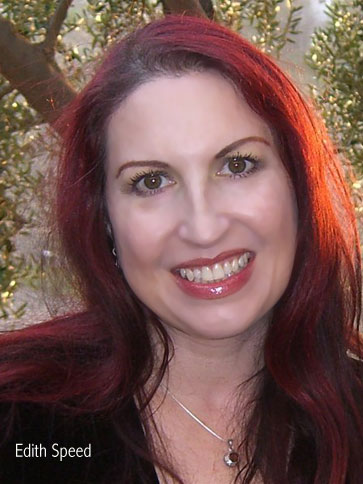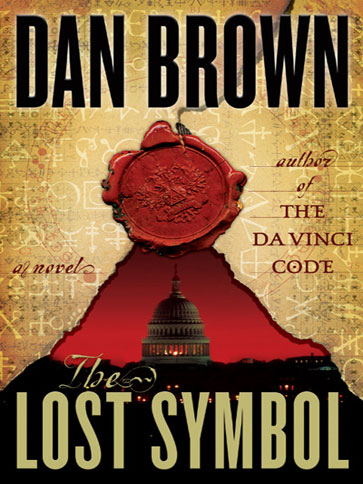 How Love Happens: The Biology of Bonding
How Love Happens: The Biology of Bonding
Love, or the lack of it, changes the young brain forever.” Thomas Lewis, M.D.
“There is more hunger for love than for bread.” Mother Theresa
BIOLOGY: The scientific study of living organisms in all its forms and developmental processes
BONDING: A relationship of ongoing mutual attachment between parent and child that begins at birth and establishes the basis for all other relationships
You may question how the way your parents loved you as a child could dictate your love life today. After all, most of us have a hard time remembering what we did last month, including the name of that guy we found on http://Match.com, then met for coffee . . . once. But, your first step in making sense of the nonsense of 21st Century dating is to understand that your earliest family relationships programmed your brain for grown-up intimacy.
Admittedly, Mother Nature did begin with rather primitive requirements for family bonding. To be blunt, before dinosaurs came along, there was precious little of it going on. Take for example, reptiles, whose offspring arrive by egg, and pre- or post-hatching, Mommy Dearest either eats them or leaves them to their fate by simply slithering into the sunset. Not much bonding there. Not much of a brain, either. The reptilian brain neither thinks nor feels. (I know what you’re thinking . . . some men could qualify in this category. But, on with our story.)
Over the next few hundred million years, as brains expanded, so did the quality of bonding between mates and offspring. The earliest mammals evolved with a limbic brain, (our “flight or fight” center), which gave them the ability to feel emotion. Granted, this early brain had a rather short emotional list, namely FEAR for its survival. But, delving more deeply into the limbic brain’s significance, today’s medical students classify its functions as the Famous Four Fs: Feeding, Fighting, Fleeing, and sexually reproducing!
Ah, but leave it to clever Mother Nature to know there had to be something even more wonderful than the FOUR Fs. With another few hundred million years, the amazing limbic brain was overlaid with the even more amazing neocortex (the thinking brain), and nature was on its way to L*O*V*E*. From that point on, mating and maternal instincts began a quantum leap, developing ever more elaborate courting rituals, longer pregnancies, and laser-focused protection of offspring. Eventually, the human brain would be gifted with our unique abilities to shower our beloved mate and children with the language of love, such as music, poetry, love letters, lullabies, and whispered sweet nothings in the night. But, again, back to our story.
Mammals, especially the higher-evolved primates, bond in mutually nurturing social groups, with plenty of touching, rubbing, nibbling, prancing, preening, and shameless cavorting. These behaviors naturally lead to bonding, which often results in babies, who attach like glue to their mothers to be nursed, protected, and nurtured until capable of fending for themselves.
So, the critical key to survival of higher-ordered species is to meet the infant’s biological desperation for parental protection. In humans, such consistent early bonding fulfills our life’s first and most crucial task . . . to learn it is safe to TRUST. How our infant brain learns this lesson builds the platform for all intimate relationships to follow.
Mother Nature planned long ago that little ones are to be protected by the big ones, so she did not equip our baby brain with the ability to cope with stress. Rather, as an infant, your sense of safety and survival depended on feeling peaceful, aka: knowing your protectors were close enough to protect you. In your first thousand days, you were more vulnerable, physically and emotionally, than at any other time of life.
You had no way to express yourself, other than with emotions. Without language, your neocortex (the thinking brain) could not rationalize why Mommy didn’t come when you cried. You could not predict that in five minutes she’d be picking you up and wiping your tears away. You felt life in the moment, without any means to understand what was happening to you, or why. And, with every experience, your feelings programmed your limbic brain with your first impressions of life on this planet.
It all came down to chemistry, that word we toss around as we decide if love is really love. Ironically, once upon our baby days, chemistry was literally all that mattered. Chemistry set the course in our brains that set the course of our lives. Here’s why:
When a mother holds her infant, both brains synchronize in a shared overdose of oxytocin and serotonin, the hormones of love and peace. This brain state of “baby bliss” is nature’s brilliant idea for bonding their relationship for life. In this brief window of time, these bonding hormones cause the mother to fall so deeply in love with her child that her brain becomes hard-wired to protect him for the rest of her life, just like the lioness with her cub. For the infant, mother love is his first love. Her consistent nurturing imprints his brain with his first impression of this strange new world. Feeling safe in her arms sews the seeds for trust, the foundation of adult intimacy, as she bathes his brain in bliss.
As a woman, you experience these very same hormones. When you believe you’ve found your prince, it is oxytocin that takes your emotions to euphoria with just the thought of him. When he loves you in return, serotonin joins the mix, and your shared sense that it’s safe to trust the other cradles your emotional intimacy. Needless to say, blending serotonin and oxytocin makes quite a love cocktail! Maybe even better than a Cosmo!
But, if this love fest is interrupted, nature’s perfect plan takes a detour. When the mother is physically and/or emotionally inconsistent, the baby’s limbic brain too soon senses a disabling threat to its own survival, replacing the bonding hormones with cortisol, the stress hormone. Perhaps you can relate such panic to the times you feared the man you deeply love is slipping away from your life. Your limbic brain pounds you with cortisol-inducing survival questions, like “How can I live without him?” Somehow, you muddle through the grief process and find a way to start over. But, for a baby, when bonding collapses, the limbic brain answers this most legitimate question with deathly terror.
An early life of connect/disconnect, attach/detach, bond/separate care giving interrupts normal emotional development. As the child grows, the unpredictability of his earliest, most vulnerable relationship now creates his unconscious war of psychic survival between fear of abandonment versus fear of not belonging, fear of love versus fear of losing love. In this double-bind dilemma, fear of intimacy overrides the natural longing to bond. As an adult, this wounded soul has no significant experience, or limbic programming, as to what love even looks or feels like. Any attempt at intimacy is doomed, creating suffering in both lover and beloved.
When one’s childhood was fear-based, it’s not hard to imagine feeling terror at the mere thought of intimacy’s demand of vulnerability. Imagine this monologue deep in the recesses of the brain: “I’m so lonely, but if I decide to love someone, they will abandon me. But, I’m deathly afraid of being alone. Without someone, I won’t survive. But if I decide to care for someone, they will abandon me. So, I will sabotage them before they sabotage me. But, I’m afraid, deathly afraid, of being alone.”
Such push-pull craziness often creates dynamics of rigid “black and white” thinking, addictions, controlling power struggles, rage, introversion, pessimism, narcissism, suspiciousness, lying, and impulsivity—every bit of it dictated by fear.
How tragic that the most intricate, complex, miraculous, transcendent creation, the human brain, has evolved over millions, perhaps billions, of years, yet can be so easily tripped up by emotional neglect suffered, primarily, in the first thousand days of its life. Tripped up, but not destroyed.
A wise man once noted, “Knowledge is power.” Perhaps, as you read this article, the suffering of friends, family, lovers, maybe even your own suffering, finds the answer as to why such a life has struggled so much. But, is that life’s longing for love doomed to fail forever because of the failure of others?
Amazingly, the answer is “no.” Modern brain research has proven that positive, self-nurturing choices change our brain, rewiring neural pathways, and transforming limbic patterns of cortisol panic to peace. When one courageously chooses such deep reprogramming, the childhood wounds that have sabotaged any hope of trusting another human being, the core of intimate relationships, can begin to heal.
The power to confront our most wrenching pain, to trust ourselves first, to know who we truly are and what we truly deserve, to choose to nurture our health, our hearts, our thoughts, and our dreams releases within the human brain a flood of hormonal bliss to one hundred billion thirsty brain cells, generating the life force that is greater than nature’s potency to push a fragile flower through asphalt! It’s called love and this is how it happens.
The following resources have profoundly supported millions of men and women in healing the emotional wounds of childhood. I highly recommend them.
RECOMMENDED READS:
* HOMECOMING: Reclaiming and Healing Your Inner Child , by John Bradshaw
* FAMILY SECRETS: The Path from Shame to Healing , by John Bradshaw
* A GENERAL THEORY OF LOVE , by Drs. Lewis, Amini, and Lannon
* TOXIC PARENTS: Overcoming Their Hurtful Legacy and Reclaiming Your Life , by Susan Forward
* BECOMING ATTACHED: First Relationships and How They Shape Our Capacity to Love , by Robert Karen, Ph.D
* TOUCHING: The Human Significance of Skin , by Ashley Montague
* MAGICAL PARENT, MAGICAL CHILD, The Optimum Learning Relationship , by Michael Mendizza
RECOMMENDED DVD’S:
* March of the Penguins
* The Weeping Camel
Written by Morgan Delaney
 2009 has been a bittersweet year for a lot of people. Not only did our economy take a dive, but also some very famous people left this world. As life goes on, we continue to fight and win and lose our battles. It’s pretty well known that October has been deemed Breast Cancer Awareness Month. And I am happy to celebrate those women who have fought the battle and won. Statistically, if detected early, breast cancer has a very high cure rate. And those women who’ve fought the fight and won are told if they are cancer-free for five years, their chances of recurrence are slim. So, as if on borrowed time, they wait. They get their mammograms, check for lumps frequently. They worry when they feel tired or listless. The threat of breast cancer returning is always looming over their heads. But what about those women who’ve successfully passed the 5-year mark? They should feel safe, right? Not always.
2009 has been a bittersweet year for a lot of people. Not only did our economy take a dive, but also some very famous people left this world. As life goes on, we continue to fight and win and lose our battles. It’s pretty well known that October has been deemed Breast Cancer Awareness Month. And I am happy to celebrate those women who have fought the battle and won. Statistically, if detected early, breast cancer has a very high cure rate. And those women who’ve fought the fight and won are told if they are cancer-free for five years, their chances of recurrence are slim. So, as if on borrowed time, they wait. They get their mammograms, check for lumps frequently. They worry when they feel tired or listless. The threat of breast cancer returning is always looming over their heads. But what about those women who’ve successfully passed the 5-year mark? They should feel safe, right? Not always. two charities: Divas with a Cure and Bowling for Boobies. I am sad to announce that Edith Speed, the founder of Bowling for Boobies passed away last summer. She had exceeded her 5-year mark, but the cancer came back, and this time it won. It was a shock. It was sudden, and it left me with all sorts of questions.
two charities: Divas with a Cure and Bowling for Boobies. I am sad to announce that Edith Speed, the founder of Bowling for Boobies passed away last summer. She had exceeded her 5-year mark, but the cancer came back, and this time it won. It was a shock. It was sudden, and it left me with all sorts of questions. 3. Checking your breasts every month may not reduce your risk of developing breast cancer, but it may help detect breast cancer early. The earlier breast cancer is found, the less aggressive the treatment.
3. Checking your breasts every month may not reduce your risk of developing breast cancer, but it may help detect breast cancer early. The earlier breast cancer is found, the less aggressive the treatment.







